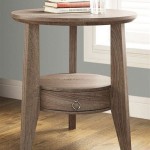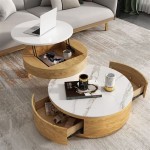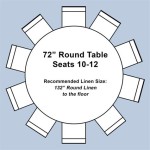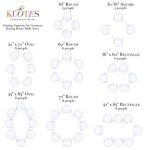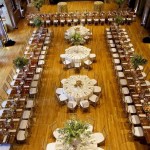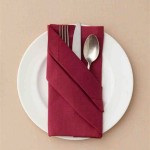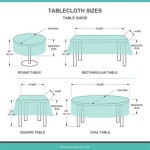How to Set Up Long Tables for a Wedding Reception
Long tables, often referred to as banquet tables or family-style seating, are an increasingly popular choice for wedding receptions. They foster a sense of community and create a visually striking aesthetic within the venue. However, successfully setting up long tables requires careful planning and attention to detail. This article provides a comprehensive guide to navigating the process, ensuring a seamlessly elegant and functional reception space.
The decision to use long tables impacts numerous aspects of the reception planning, from guest count and space allocation to linen selection and centerpiece design. Early consideration of these factors is crucial for a cohesive and aesthetically pleasing outcome. Neglecting to address these elements proactively can result in logistical challenges and visual imbalances on the wedding day.
Determining Table Dimensions and Layout
The initial step involves accurately assessing the venue's dimensions and determining the optimal table arrangements. Precise measurements of the room are essential to prevent overcrowding and ensure comfortable movement for guests and service staff.
Standard long tables typically measure 6ft or 8ft in length and 30 inches in width. However, variations in size may exist depending on the rental company or venue's inventory. It is imperative to confirm the exact dimensions with the supplier to avoid discrepancies during setup. The number of guests seated per table is also a critical consideration. A general rule of thumb is to allocate approximately 24-30 inches of linear space per guest. This allows for adequate elbow room and prevents a cramped dining experience.
The layout of the tables should complement the venue's architecture and flow. Common configurations include parallel rows, a single continuous line, or a herringbone pattern. The chosen layout should facilitate easy navigation for both guests and service staff, while also maximizing the use of available space. Consider the placement of key elements such as the dance floor, buffet stations, and bar areas when determining the table arrangement. Avoid placing tables in locations that obstruct pathways or create bottlenecks.
Drafting a detailed floor plan is highly recommended. This visual representation of the venue and table placement allows for accurate assessment of space constraints and helps identify potential issues before the actual setup. Include the dimensions of the tables, aisles, dance floor, and other key areas in the plan. This plan can then be shared with the venue staff, rental company, and wedding planner to ensure everyone is aligned on the intended layout.
Furthermore, consider the proximity of the tables to electrical outlets. If lighting or sound equipment requires power, ensure there are sufficient outlets nearby or that extension cords are strategically placed to avoid tripping hazards. Consult with the venue's event coordinator to identify the location of electrical outlets and any restrictions on their use.
Selecting Linens, Dinnerware, and Centerpieces
The choice of linens, dinnerware, and centerpieces significantly influences the overall aesthetic of the reception. These elements should complement the wedding's theme and color palette, creating a cohesive and visually appealing tablescape.
Linen selection extends beyond simply choosing a color. Consider the fabric type, texture, and length. Options range from crisp cotton and elegant satin to rustic burlap and luxurious velvet. The length of the linen is equally important. Tablecloths can be floor-length for a formal look or shorter, allowing the table legs to be visible for a more relaxed vibe. Ensure the linens are properly ironed or steamed to remove any wrinkles or creases. Clean, pressed linens contribute to a polished and sophisticated appearance.
Dinnerware choices should align with the style of the wedding. Options include classic white china, modern geometric plates, and rustic stoneware. Consider the number of courses being served and select appropriate plate sizes. The placement of silverware is crucial. Follow traditional etiquette guidelines, positioning forks to the left of the plate and knives and spoons to the right. Ensure all silverware is polished and free of water spots. The placement of glassware also requires careful consideration. Typically, water glasses are placed above the knife, followed by wine glasses. The number of glasses will depend on the beverages being served.
Centerpieces are the focal point of the tablescape. They should be visually appealing but not obstruct guests' views or impede conversation. Options range from elaborate floral arrangements to simple candle displays. Consider the height of the centerpieces to ensure they do not interfere with guest interaction. Taller arrangements may require narrower bases to minimize obstruction. Incorporate elements that complement the wedding's theme, such as natural wood, metallic accents, or personalized details. Ensure the centerpieces are securely placed on the table to prevent accidental tipping or damage.
The number of centerpieces per table will depend on the length of the table. For longer tables, multiple smaller arrangements may be more visually appealing than a single large centerpiece. Consider incorporating greenery, such as garlands or runners, along the length of the table to create a cohesive and organic look. Lighting can also enhance the ambiance of the centerpieces. Options include candles, miniature string lights, or spotlights. Ensure all lighting is safe and does not pose a fire hazard.
Optimizing Guest Comfort and Functionality
Beyond aesthetics, ensuring guest comfort and functionality is paramount. Thoughtful consideration of seating arrangements, accessibility, and service flow enhances the overall dining experience.
Seating arrangements should be carefully planned to maximize guest enjoyment. Consider factors such as relationships, age groups, and mobility when assigning guests to tables. Avoid placing guests who may not know each other well together. Instead, group people with shared interests or existing connections. For guests with mobility issues, ensure seating is easily accessible and located near entrances or restrooms. Clearly labeled place cards or seating charts facilitate easy navigation and prevent confusion. Providing comfortable seating is also essential. Consider using padded chairs or adding cushions to hard chairs. The height of the chairs should be appropriate for the table height, allowing guests to dine comfortably.
Accessibility is a crucial consideration for all guests. Ensure there are adequate aisles between tables to accommodate wheelchairs or other mobility devices. Avoid placing obstacles in pathways that could pose a tripping hazard. Consider providing alternative seating options for guests who may have difficulty sitting for extended periods. This could include lounge areas or comfortable chairs near the dance floor. Clearly mark accessible restrooms and other facilities. Train staff to assist guests with disabilities and provide any necessary accommodations.
Efficient service flow is essential for a smooth and enjoyable dining experience. Ensure there is adequate space for servers to move freely around the tables. Position service stations strategically to minimize travel time and prevent bottlenecks. Consider assigning specific servers to each table to ensure personalized attention. Train staff on proper serving etiquette, including how to clear plates and refill drinks discreetly. Providing clear instructions on dietary restrictions or allergies is crucial for ensuring guest safety. Clearly label food items and provide alternative options for guests with specific dietary needs. Coordinate with the catering team to ensure food is served promptly and at the correct temperature.
Finally, consider the ambient temperature of the venue. Ensure the room is adequately heated or cooled to maintain a comfortable environment for guests. Provide blankets or shawls for guests who may be sensitive to cooler temperatures. Consider providing fans or portable air conditioners for outdoor receptions. Regularly monitor the temperature and adjust accordingly to ensure guest comfort throughout the event.
By carefully considering table dimensions and layout, linen and centerpiece selection, and guest comfort and functionality, wedding planners can ensure a memorable and enjoyable reception experience for all attendees. The implementation of these principles contributes to creating a cohesive atmosphere within the space. The setup of the tables plays a large part in creating this successful event space.

Round And Long Tables Wedding Table Layouts Classic Settings

9 Popular Wedding Reception Seating Arrangements

How Many Wedding Guests Fit At A Table Bellwether Events

Top 5 Types Of Long Wedding Reception Tables View Post

How To Style Long Wedding Tables Perfect Details

Mix Of Long Feasting Tables And Round Wedding Table Layouts Classic Settings

Unique Table Configurations For Your Wedding Reception
:max_bytes(150000):strip_icc()/photo-d011b9734d484ae5ad01b685970a0708-f802d834a79e4800a0bf72bc8c766dcb.jpg?strip=all)
Wedding Seating Chart Templates To Simplify Planning

52 Wedding Long Tables And Receptions Ideas Weddingomania

The Most Gorgeous Long Table Settings For Some Inspiration Wedmegood
Related Posts

